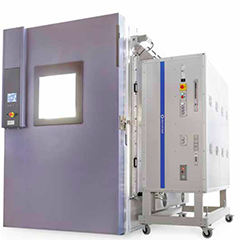It’s true that the dropping cost of production, as well as technological advances are at the heart of growth in solar. But to continue this growth the industry must measure, as well as maintain standards. PES speaks to Stefan Roest of Eternal Sun BV about how they are putting solar to the test.
PES: Welcome to PES. Would you care to introduce yourself to our readers and explain a little more about how your company serves the PV industry?
Stefan Roest: My name is Stefan Roest, CTO of Eternal Sun. We are a manufacturer of high-end solar test equipment and we are based in the Netherlands.
Our company serves the PV industry by providing unprecedented solutions to meet the current challenges of solar energy, and looking ahead to its future. For the next decade, we see two major challenges for the industry; investment security and how to achieve further major cost reductions steps.
In investment security, next scale of growth of solar energy comes from large size PV installations and farms. The PV farm investment horizon should be 20 to 30 years. However current test methods, according to international standards only exclude infant mortality of PV modules – they do not predict the 20 to 30 year behaviour of PV modules, and do not take into account the fluctuations of local and extreme climate conditions.
To answer this problem, we have developed a unique test solution – our climate chamber solar simulator (CCSS): a steady-state and long pulse Class-AAA solar simulator integrated into a robust climate chamber.
The system provides unprecedented insights in PV cell and module behaviour and degradation: any extreme combination of sunlight, temperature and humidity can be simulated, while taking continuous highly accurate performance measurements. The system is currently launched for all module sizes, and up and running at Solliance in the Netherlands.
The second issue we face is how to achieve further major cost reduction steps.
Over the last decade we have seen a dramatic price drop of silicon PV modules, which has been driven by economies of scale. Coupled to this, silicon processing costs and the cost of the production has also dropped.
As well as a continuing fall in the price of manufacturing, further major costs reductions have to come from technology advances. As an example of a major technology advance, we see strong potential of bifacial PV: up to 40 per cent additional power against up to 10 per cent additional costs. The major challenge will come in the performance benchmarking of extra power. Because of this, we are developing a test standard for bifacial modules, and have done first tests with bifacial solar simulation.
In order to support this development, as well as help reduce costs in the future, we must also continue to build relationships with major research organisations and manufacturers.



























